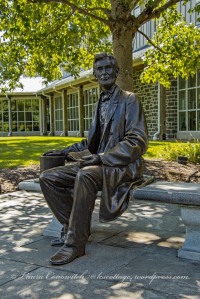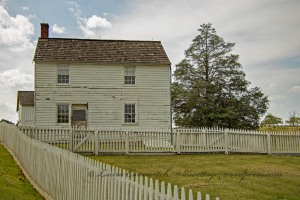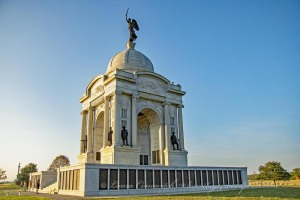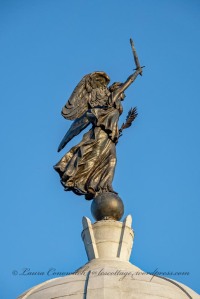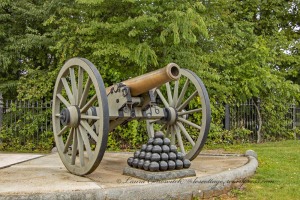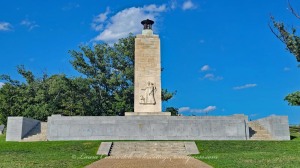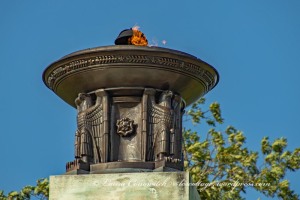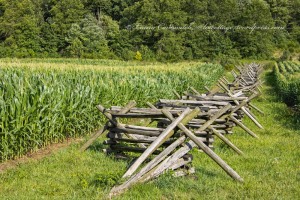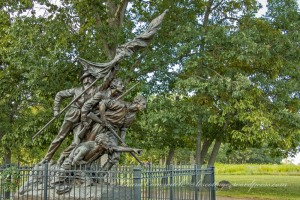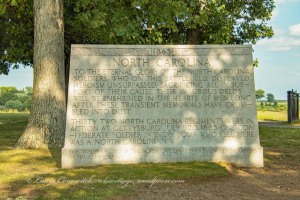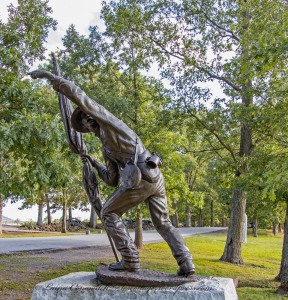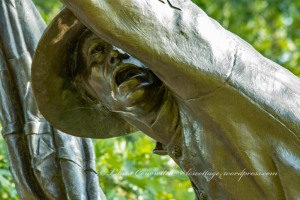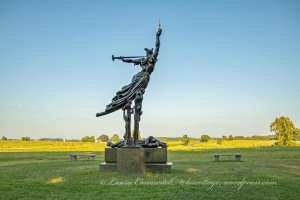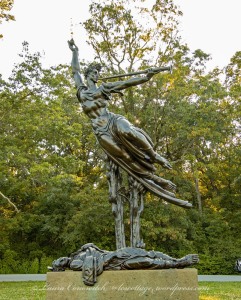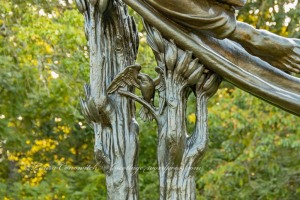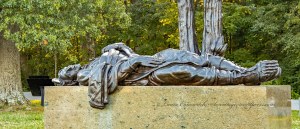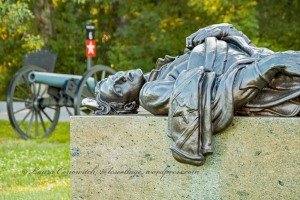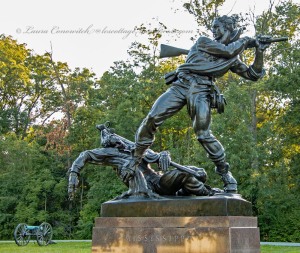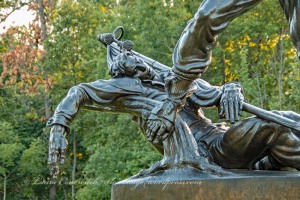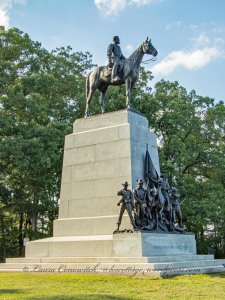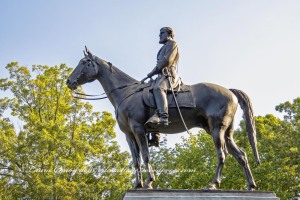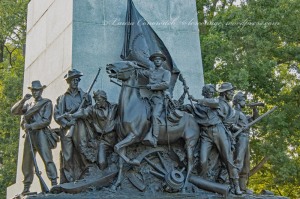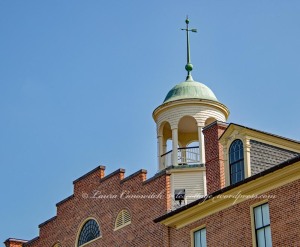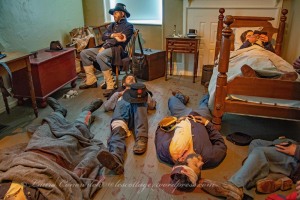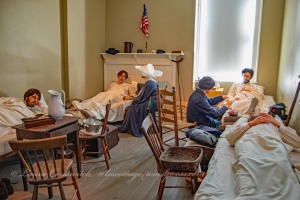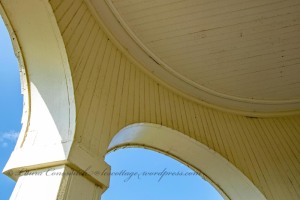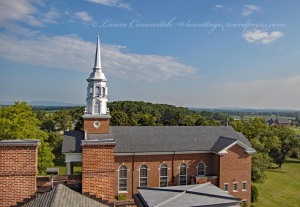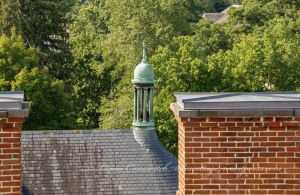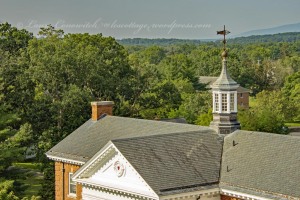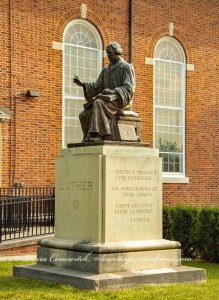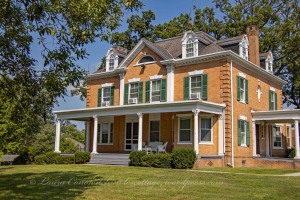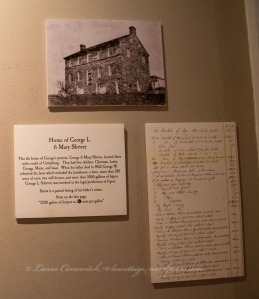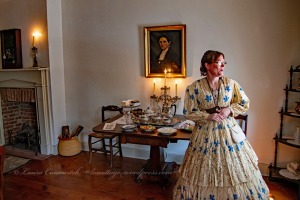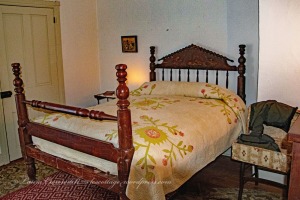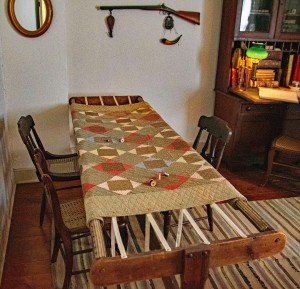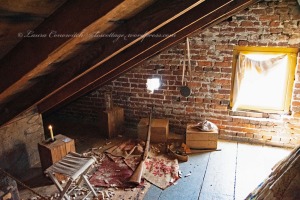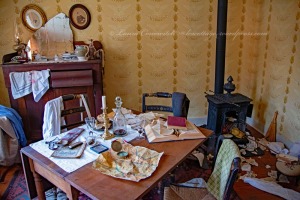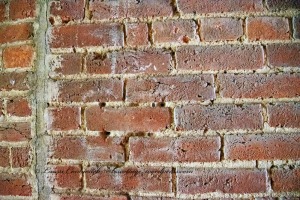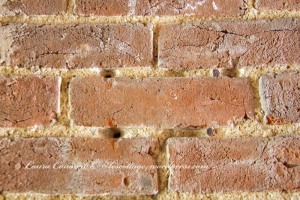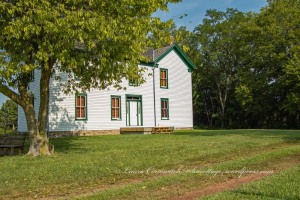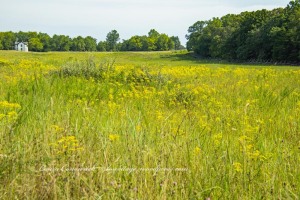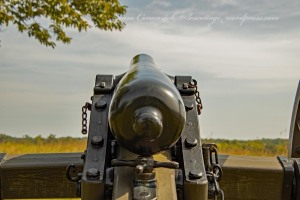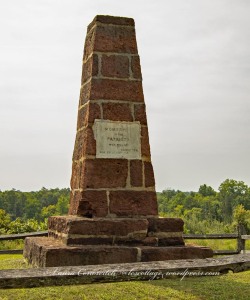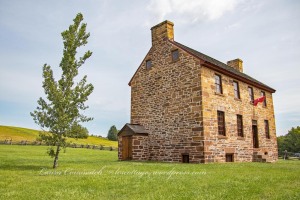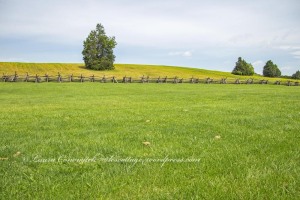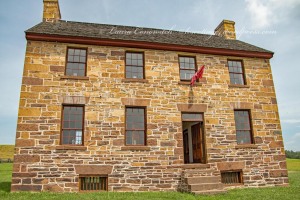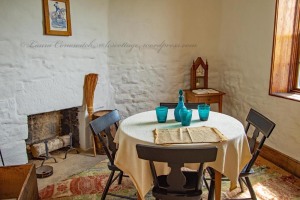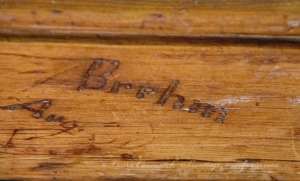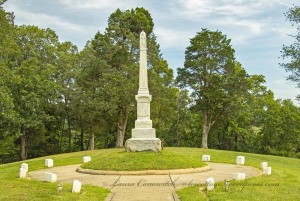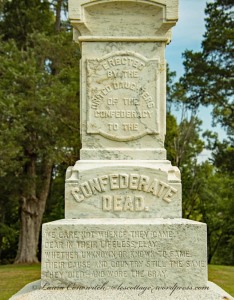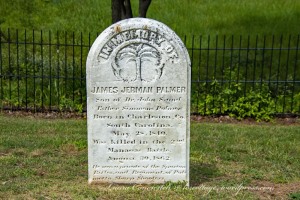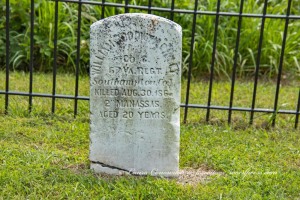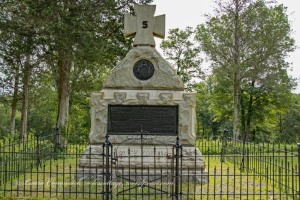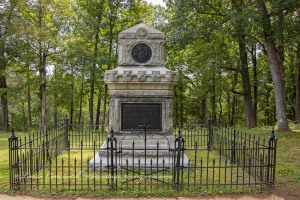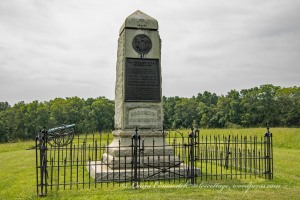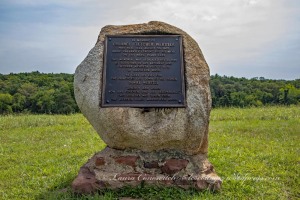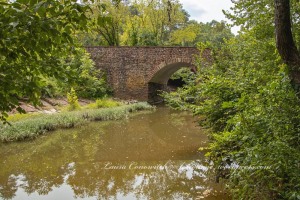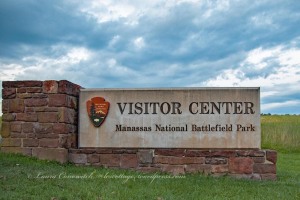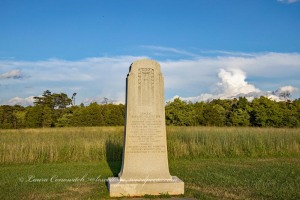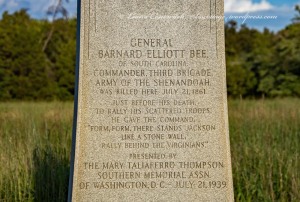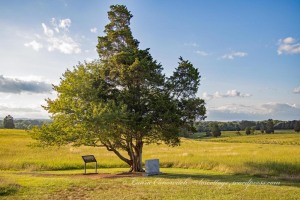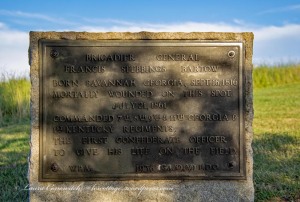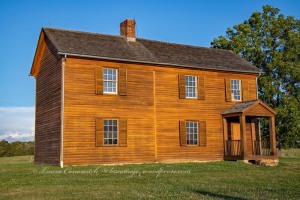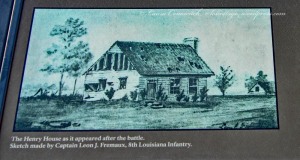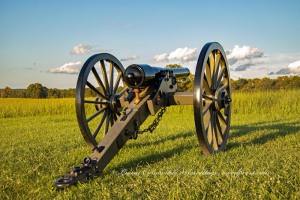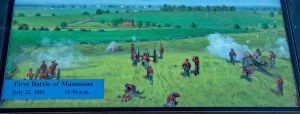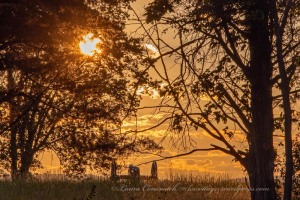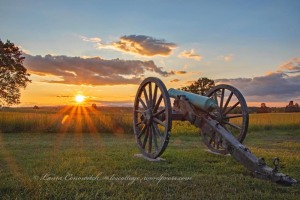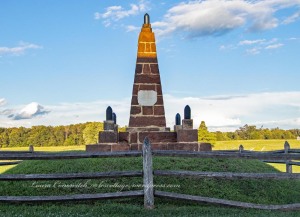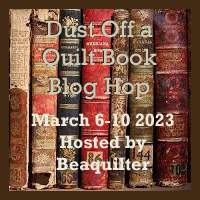*Clicking on a photo will give you a closer look!
Gettysburg National Military Park is over 5700 acres and contains 1328 monuments, memorials, markers, plaques to commemorate and memorialize the men and women who fought and died here on the Gettysburg Battlefield.
There is no way for me to cover all of it in a few blog posts. I highly recommend visiting if you are interested and if you can!
I took hundreds of photos and I have had a difficult time culling through them and choosing what to share. This post will be long as I share what I have chosen from my photos.
Jacob Hummelbaugh was a widower and a shoemaker. He owned the small Hummelbaugh Farm (constructed in the 1840s as a one story log house) located on the western side of Taneytown Road (now called Pleasonton Avenue).
On July 2, the men of the 148th Pennsylvania of the Union 2nd Corps arrived nearby. Union General Alfred Pleasonton used the farm house as a headquarters and Regimental Surgeon Alfred Hamilton set up a field hospital here.
The wounded Confederate General William Barksdale of Mississippi was treated here before he died on July 3rd and was buried in the yard. Captain Robert H. Forster of the 148th recalled that Barksdale was “mortally wounded, his breast torn and one leg shattered by grape shot.” Dr. Hamilton had given him morphine, and Robert Cassidy, a drummer in the 148th assisting with hospital duties, had spoon-fed the enemy officer sips of water.
The wounded filled not only the farm house, but the grounds and out buildings as well. There is an excellent YouTube video describing the field hospital and the medical practices during the civil war. It is 32 minutes long, but well worth the time to watch. Click here.
The Gettysburg Battlefield Memorial Association purchased the farm in 1887.
The Pennsylvania State Memorial, dedicated in 1910, is the largest monument on the Gettysburg Battlefield. Union artillery held the line alone here on Cemetery Ridge late in the day as Major General George Gordon Meade called for infantry from Culp’s Hill and other areas to strengthen and hold the center of the Union position.
There are ninety bronze, name-covered tablets embedded in the granite surface. Each plaque represents a Pennsylvanian regiment, and each name belongs to one of the 34,530 Pennsylvanian fighting men who served his family and his country in the Battle of Gettysburg. Those who were killed in the line of duty are marked with stars beside their names.
Eight portrait statues, two facing in each direction, depict the heroic leaders who took part in the battle. Seven are Pennsylvanians, including General George Meade, who commanded the Army of the Potomac, and Pennsylvania Governor Andrew Gregg Curtin, who delayed Lee’s troops in Virginia and put together a state militia. The eighth statue is of President Abraham Lincoln, whose Gettysburg Address is among the nation’s most famous speeches.
Crowning the monument is a 21 feet tall statue made with the bronze of melted-down cannons, known as The Goddess of Victory and Peace. This was modeled by sculptor Samuel Murray, who also did some bas-relief scenes and detail work on the monument.
At 1 p.m. Major General Robert Emmet Rodes‘ Confederates attacked from Oak Hill, threatening Union forces on McPherson and Oak ridges. Seventy-five years later, on July 3rd, 1938, over 1,800 Civil War veterans helped dedicate the Eternal Light Peace Memorial to “Peace Eternal in a Nation United.”
In the third year of the civil war, on July 1st, 1863, the Battle of Gettysburg began about 8 a.m. to the west beyond the McPherson Barn as United States cavalry confronted Confederate infantry advancing east along Chambersburg Pike. Fierce fighting spread north and south along this ridgeline as additional forces from both sides arrived.
The State of North Carolina Monument depicts a wounded officer pointing the way forward to the enemy while a veteran and younger comrade lead a color bearer in the charge. The statue was sculpted by Gutzon Borglum using photographs of Confederate veterans as models. Orren Randolph Smith of North Carolina, the model for the color bearer, claims that he was the designer of the Confederate national flag.
North Carolina provided 14,147 men to the Army of Northern Virginia at Gettysburg, the second largest state contingent after Virginia. It lost over 6,000 casualties, more than 40% of the men engaged. It is the largest number of casualties at Gettysburg from any Confederate state and represents over one fourth of all Confederate casualties in the battle.
The 11th Mississippi Monument features a bronze statue of Color Sergeant William O’Brien. The statue was created by sculptor William Norwood Beckwith. Sergeant O’Brien was the first of eight color bearers from the regiment who were killed or wounded during the charge.
July 3, 1863. The 11th Mississippi Infantry regiment, with its ranks growing thinner at every step, advanced with the colors to the stone wall near the Brian Barn.
The regiment was here ‘subjected to a most galling fire of musketry and artillery that so reduced the already thinned ranks that any further effort to carry the position was hopeless, and there was nothing left but to retire.’
– Report of Brig. Gen. Joseph R. Davis
The Louisiana Monument is entitled “Spirit Triumphant.” It was created by Donald De Lue. The sculpture represents a wounded gunner of New Orleans Washington Artillery clutching a Confederate battle flag to his heart. Above him the Spirit of the Confederacy sounds a trumpet and raises a flaming cannonball.
This memorial honors Louisiana’s sons who fought and died at Gettysburg July 1-2-3, 1863. It memorializes the 2300 infantrymen of Hays and Nicholl’s Louisiana Brigades, the cannoneers in the Washington Artillery of New Orleans, and those in the Louisiana Guard, Madison and Donaldsonville Artillery Batteries.
The Spirit of the Confederacy is also known as Saint Barbara, the patron saint of artillerymen. She holds a flaming cannon ball in her right hand. Saint Barbara lived in Asia Minor around 300 A.D. After she was converted to Christianity, her wealthy father had her condemned to death by beheading.
After returning from the execution, he was said to be struck by a lightning bolt which incinerated his body. Because of his fate, Barbara came to be known as the patron to be called upon to protect one in a storm. With the invention of gunpowder, and frequent accidental explosions because of its use, Saint Barbara also became known as the patron saint of artillery. Because of her muscular build, she is also known on the Gettysburg battlefield as “Barbara on Steroids.”
The Mississippi State Monument sculpture was created by Donald De Lue, who also worked on the nearby Louisiana Monument.
The color-bearer has fallen mortally wounded and his comrade steps over his body, using his clubbed musket to defend the fallen flag. It presents a very violent image of war, desperation and perseverance.
Inscription: On this ground brave sires fought for their righteous cause. In glory they sleep who gave to it their lives; To valor they gave new dimensions of courage; To duty, its noblest fulfillment to posterity, the sacred heritage of honor.
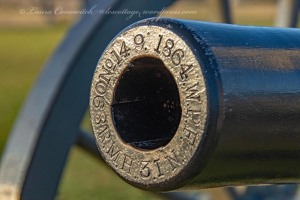
The Virginia Monument was the first Southern state monument placed on the Gettysburg Battlefield. Dedicated in 1917, it overlooks the large open field where Robert E. Lee watched the repulse of Pickett’s Charge on July 3, 1863.
The Virginia Monument stands 41 feet high, with the statue of Lee and his favorite horse, Traveler, standing 14 feet high. It is the largest of the Confederate monuments on the Gettysburg Battlefield, a tribute to the state that provided the largest contingent to the Army of Northern Virginia, its commander, and its name.
The statue was created by sculptor Frederick William Sievers from photographs and life masks of the General. Sievers went to Lexington, Virginia, to study Traveler’s skeleton, preserved at Washington and Lee University.
According to the marker at the base of the monument: The group represents various types who left civil occupations to join the Confederate Army. Left to right; a professional man, a mechanic, an artist, a boy, a business man, a farmer, a youth.
According to a description published at the time that the sculpture was completed, “the shattered cannon, broken wheel, discarded knapsack, swab and exploded shells which are scattered at the feet of the seven men would indicate that the place had been the scene of some desperate engagement, while the attitude of each of the character shows defensive, rather than offensive action.”
The design, inscription, and placement of this monument was highly controversial and hotly debated. The Contested Origins of Gettysburg’s Virginia Monument is a great read about the strong emotions of both the North and South several years after the war ended.
If you think the North and South have been united, think again.
Gettysburg Shriver House Museum
See the world around you!

